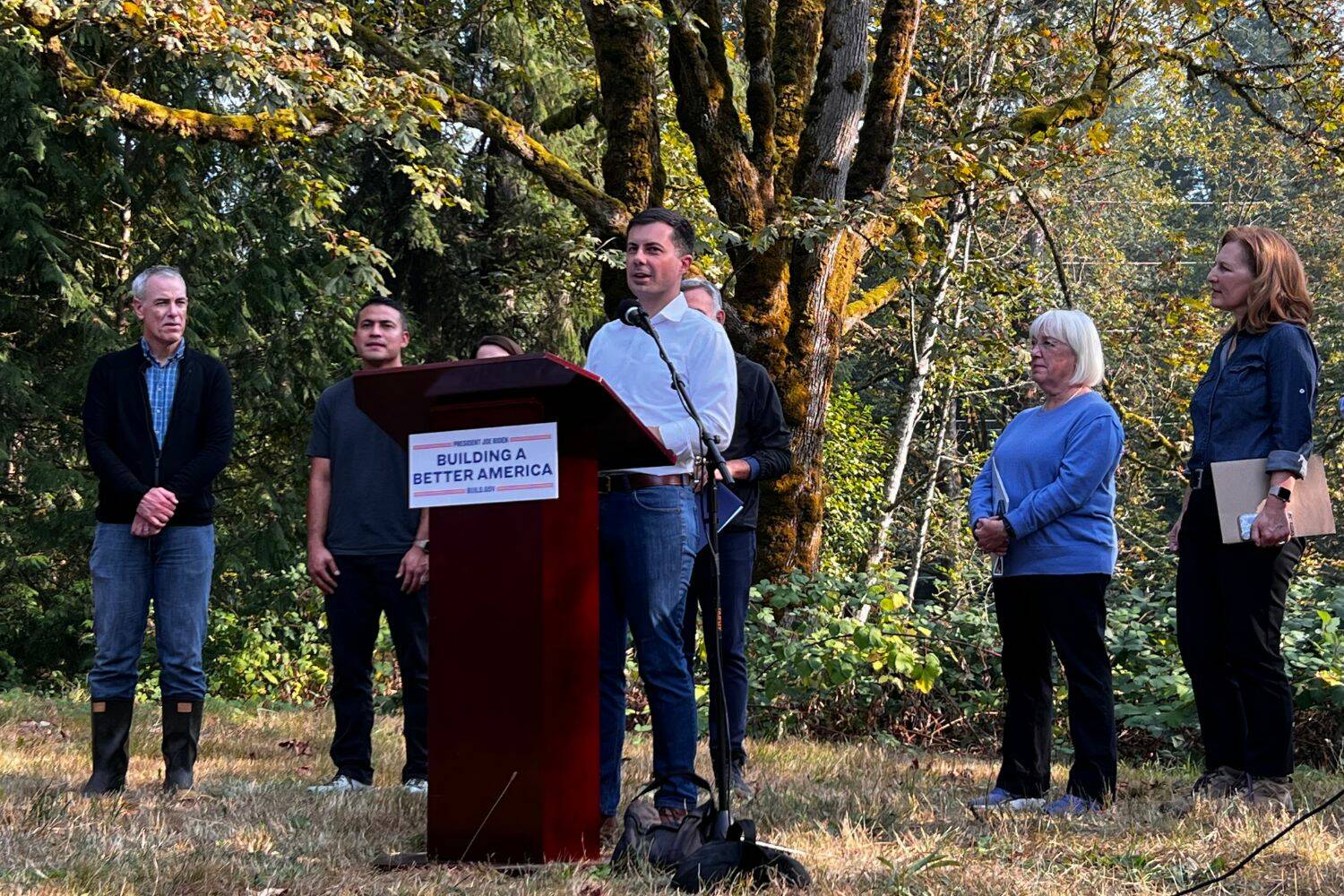Local leaders and elected officials are welcoming the opportunity to use recently earmarked federal dollars to fix fish culverts across King County that currently present a barrier to salmon migration and spawning.
On Oct. 6, local and federal leaders that include King County Executive Dow Constantine, Muckleshoot Indian Nation Chair Jaison Elkins, Senators Patty Murray and Maria Cantwell, Congresswoman Kim Schrier, Congressman Rick Larsen, and U.S. Transportation Secretary Pete Buttigieg held a press conference near a fish culvert on Carey Creek in Hobart just outside of Maple Valley to use the outdated culvert as an example of a project that could benefit from the National Culvert Removal, Replacement and Restoration Program, created by the Bipartisan Infrastructure Law.
Zach Moore, from King County’s Fish Passage Program, said fish culverts like the one in Carey Creek were built with good intentions decades ago, but they are outdated and now have unintended consequences on the passage of the very fish they were supposed to help.
Moore said that oftentimes, fish culverts have been designed as a tube that passes under roadway. But as water levels rise in the wet season, high volumes of water are forced through the tube, creating a firehose-like blast. Moore said this high-pressure blast can erode the river bed and make the floor of the river too low to reach the culvert, and it becomes impassable for salmon.
Paige Hosman, engineer with the Fish Passage Program, said that ideally the culverts would be replaced by a passage that is as wide as the creek or river naturally would be, so as not to restrict the flow of water and the passage of fish. She also said this design allows for all sorts of native animals to pass safely under the roadway.
The county has identified nearly 3,000 outdated and ineffective culverts that need replacement. Now, with federal grant money available to fund these projects, the county has prioritized about 50 fish culverts. Experts believe if these culverts replaced, they could create access to an additional 50 percent of fish habitat in the region.
Moore said previous fish culvert restoration efforts have proved to be even more effective in the recovery of salmon runs than scientists predicted. He used the example of Zacchaeus Creek, a tributary of Issaquah Creek that saw a return of spawning salmon after habitat restoration at levels not seen for decades just a year after restoration efforts.
U.S. Senator Patty Murray said the Bipartisan Infrastructure Law made about $1 billion in federal money available to be petitioned to be used to restore fish culverts, many of which are expected to be used in our region.
Talk to us
Please share your story tips by emailing editor@kentreporter.com.
To share your opinion for publication, submit a letter through our website https://www.kentreporter.com/submit-letter/. Include your name, address and daytime phone number. (We’ll only publish your name and hometown.) Please keep letters to 300 words or less.

